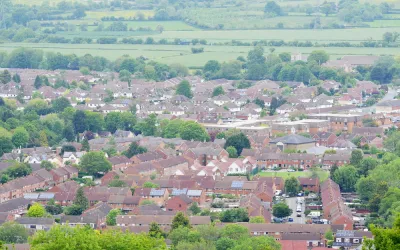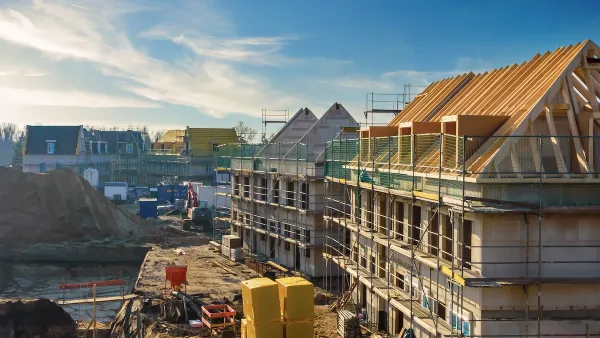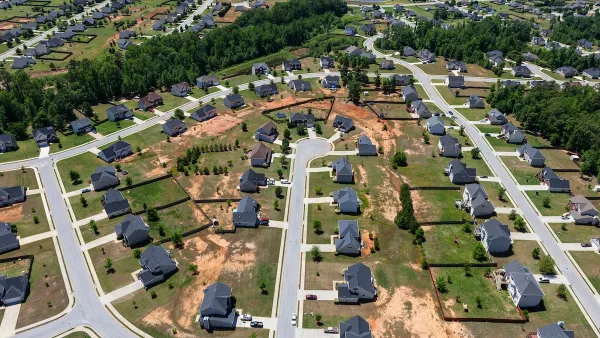The green belts that hem in developed areas in Great Britain are set arbitrarily, according to this op-ed in The Guardian, and the boundaries have outlived their usefulness.

John Elledge argues that it's time to rethink the urban growth boundaries, or greenbelts, of U.K. land use and growth policy. Elledge begins the argument by noting the lost opportunities that the policy has embedded into the country.
The creation of the metropolitan green belt fixed the boundaries of London as wherever the suburbs happened to stop. So Goodwood Avenue stops midway at an unconvincing simulacrum of countryside that’s hemmed in by homes on three sides. There are two tube stations within a mile, yet despite the housing shortage, there’s no building on this land. Not because it’s unsuitable; simply because nobody’s ever built there.
Despite the compelling case made for greenbelts at one point in development and land use planning history (a case made capably and sympathetically in this op-ed), Elledge argues that it's time to rethink growth strategy around the country, because a lack of space is a leading cause of the nation's housing crisis.
Elledge acknowledges that neither the nation's prominent politicians, nor residents of the suburbs, support proposals to loosen their green belts. But in the meantime, "[t]hey are selling younger people down the river." But "gradually, the group that benefits from the green belt is shrinking, and the group it blights is growing. Younger people vote now, too."
FULL STORY: Loosen Britain’s green belt. It is stunting our young people

National Parks Layoffs Will Cause Communities to Lose Billions
Thousands of essential park workers were laid off this week, just before the busy spring break season.

Retro-silient?: America’s First “Eco-burb,” The Woodlands Turns 50
A master-planned community north of Houston offers lessons on green infrastructure and resilient design, but falls short of its founder’s lofty affordability and walkability goals.

Delivering for America Plan Will Downgrade Mail Service in at Least 49.5 Percent of Zip Codes
Republican and Democrat lawmakers criticize the plan for its disproportionate negative impact on rural communities.

Test News Post 1
This is a summary

Test News Headline 46
Test for the image on the front page.

Balancing Bombs and Butterflies: How the National Guard Protects a Rare Species
The National Guard at Fort Indiantown Gap uses GIS technology and land management strategies to balance military training with conservation efforts, ensuring the survival of the rare eastern regal fritillary butterfly.
Urban Design for Planners 1: Software Tools
This six-course series explores essential urban design concepts using open source software and equips planners with the tools they need to participate fully in the urban design process.
Planning for Universal Design
Learn the tools for implementing Universal Design in planning regulations.
EMC Planning Group, Inc.
Planetizen
Planetizen
Mpact (formerly Rail~Volution)
Great Falls Development Authority, Inc.
HUDs Office of Policy Development and Research
NYU Wagner Graduate School of Public Service





























